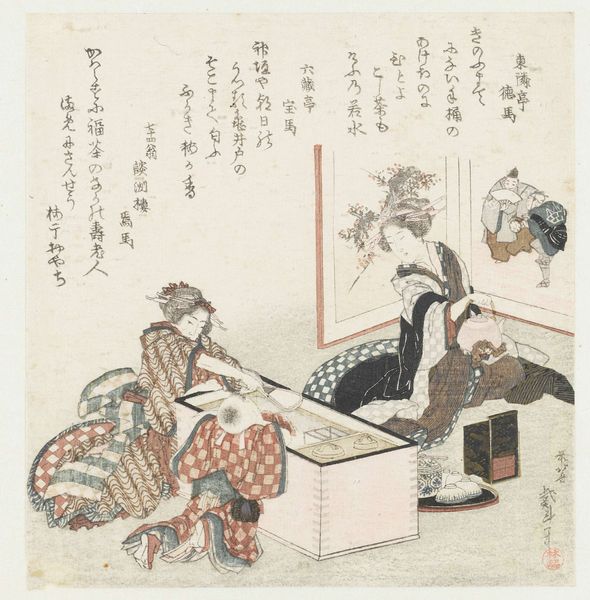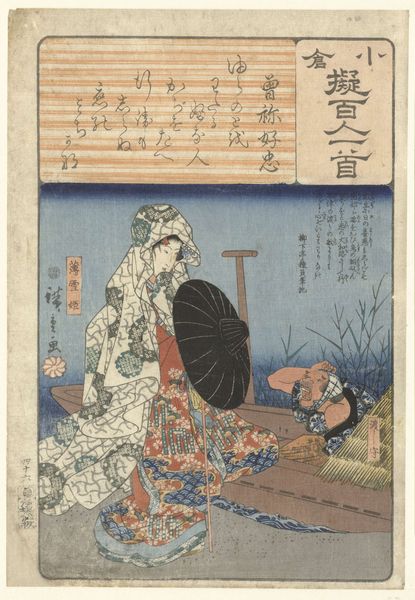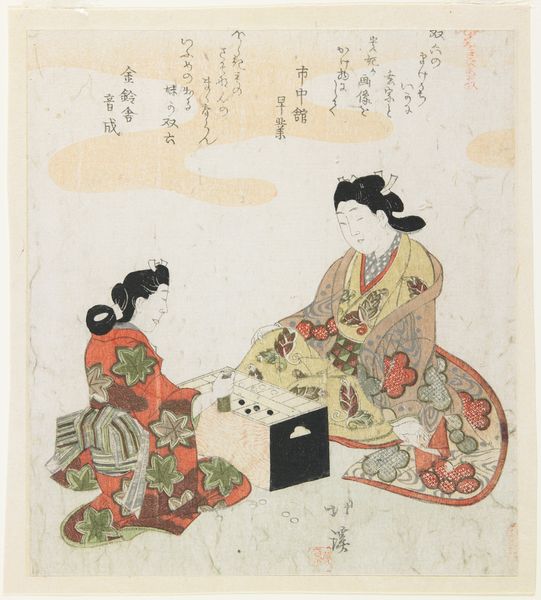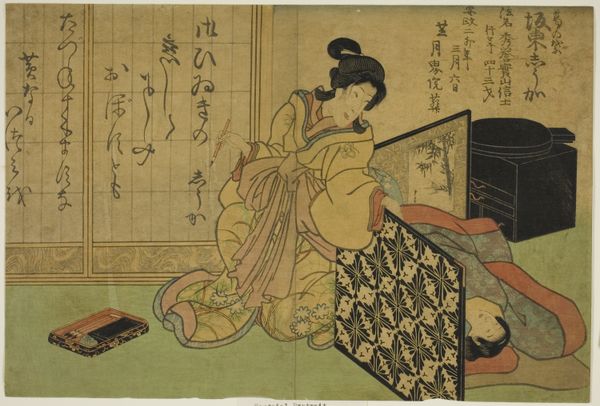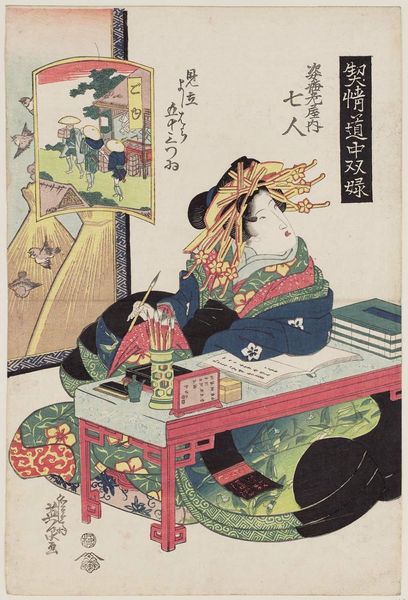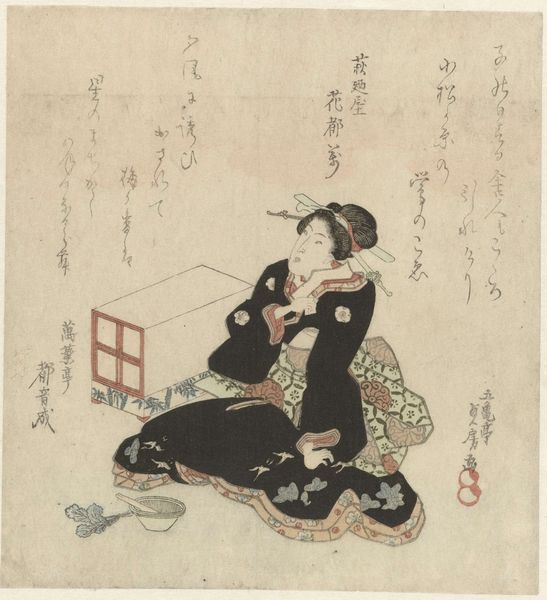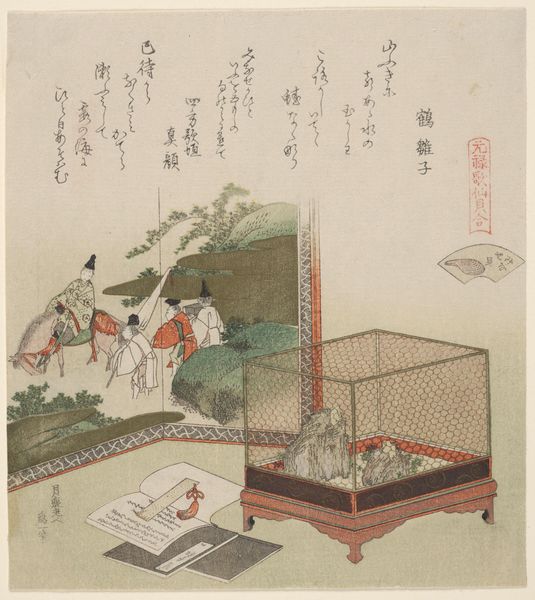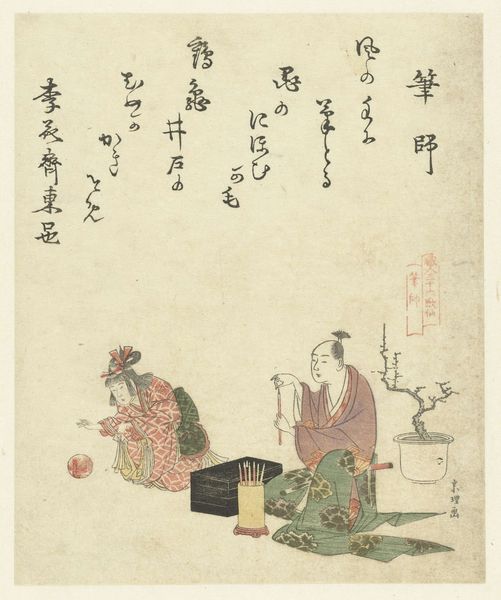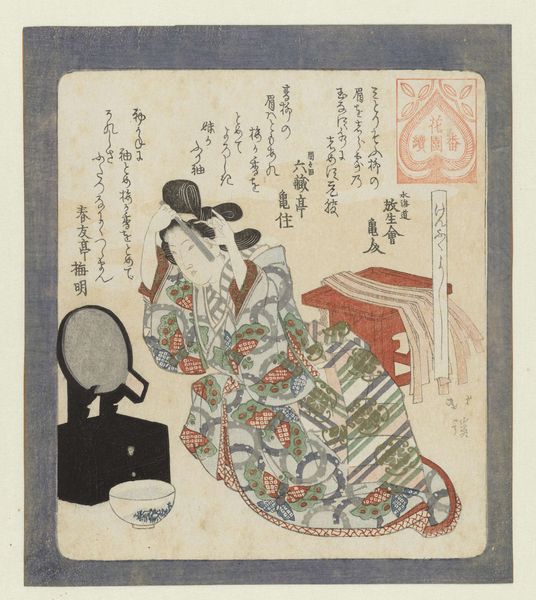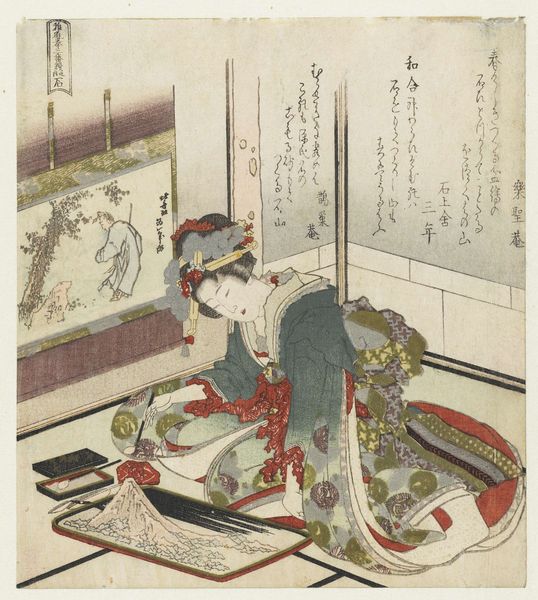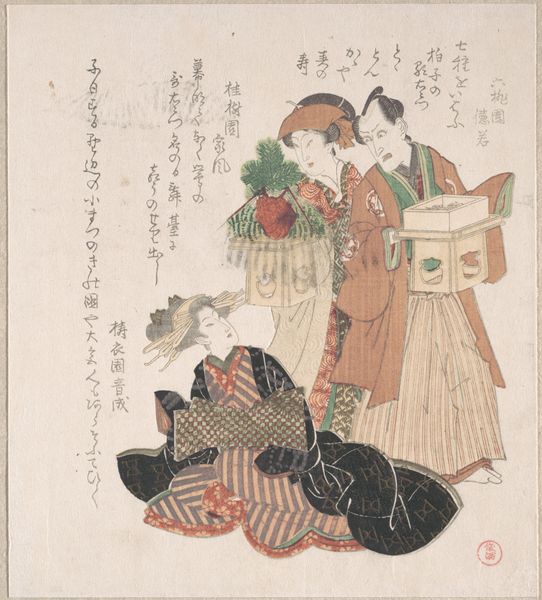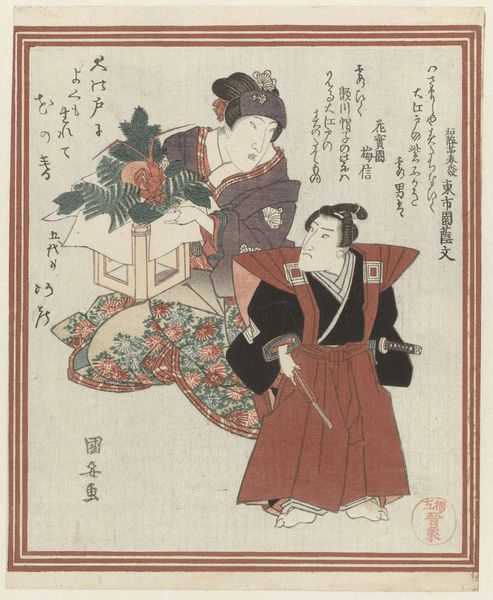
Dimensions: height 218 mm, width 189 mm
Copyright: Rijks Museum: Open Domain
Curator: Let's delve into this print titled "Two Women and a Boy Seated by a Brazier." The Rijksmuseum attributes it to the artist Katsushika Hokusai, dating it between 1868 and 1912. As we can see, it is crafted as a woodblock print, very typical of the Ukiyo-e tradition. Editor: My first thought is how intimate this scene feels, even with its delicate, almost fragile aesthetic. The subdued colors and the focused poses create a sense of quiet domesticity, while something in the scene seems odd...perhaps the odd boxy looking brazier? Curator: Exactly. Genre scenes such as this provided a window into the lives of ordinary people, but they often carried social messages and ideologies. Take, for example, how gender is portrayed and relationships seem defined by their space. Editor: I see that. It is evident how the two women, probably the central figures of the scene, attend a rectangular vessel as the child eagerly peeks inside. The setting of the room seems somewhat bare with the exception of what might be another Ukiyo-e depicting people. There also seems to be poetic inscriptions adorning this piece. Curator: Indeed. Ukiyo-e prints like this one, which translated mean “pictures of the floating world,” offered affordable and reproducible snapshots of urban life and popular culture, significantly impacting artistic and commercial developments. These pieces reflected a vibrant merchant class and often blurred lines of societal expectations. Editor: What is striking is how we are peering at the people looking in a rectangular container in a moment that almost resembles contemporary interaction via a "screen", don't you agree? This notion of display can make us reflect on social roles and social commentaries during this period, maybe prompting conversations about access, societal expectation, or perhaps hidden stories in an everyday encounter. Curator: Well, on one hand, these woodblock prints allowed mass circulation, transforming accessibility, but it does open doors to reflect upon how the circulation of the depicted image reinforces its own message in a feedback loop... something that makes the image far from objective. Thank you for that interesting connection! Editor: Thank you. Viewing art as an exercise in social understanding, and encouraging its viewing via different lenses opens an exciting dialogue, doesn't it?
Comments
No comments
Be the first to comment and join the conversation on the ultimate creative platform.
